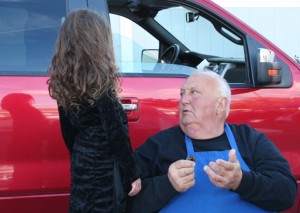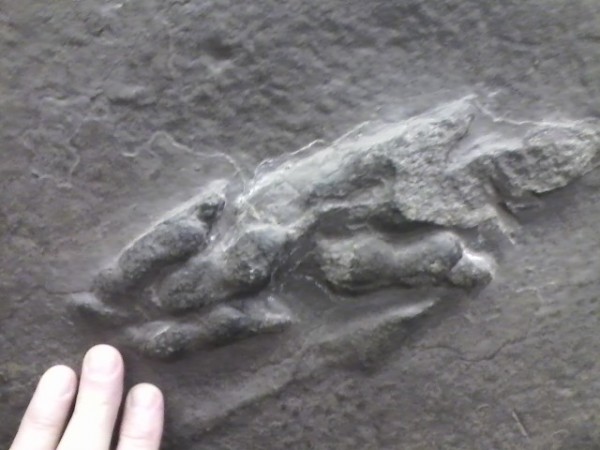Old Quarries, New Curiosities And Tracks Found.
My dad had a theory that people in the north moved faster and talked more quickly because of the climate. He was a curious man. As we were traveling across a seemingly endless stretch of Florida Panhandle backroad, he drove across a series of rumble strips intended to alert a driver that a stop and intersection was ahead. During his visit, we shuttled back and forth on that road quite a bit. Then one day he came up with a tune based on the rhythm of those road sounds. Odd. Yet it was a catchy little ditty. Who else could dream up such a thing?
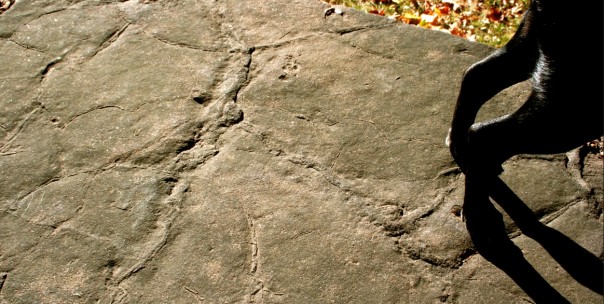
Time was when this was mud. Today it is stone with fossil mudcracks atop a wall where busy life streams past at a busy intersection in a small city on the Connecticut River.
He noticed things most people missed. Also dad enjoyed time with his six offspring and a herd of friends and neighbors in, out, and around our home. In time, that crowd included grandchildren. After he officially retired, he was more productive than ever.
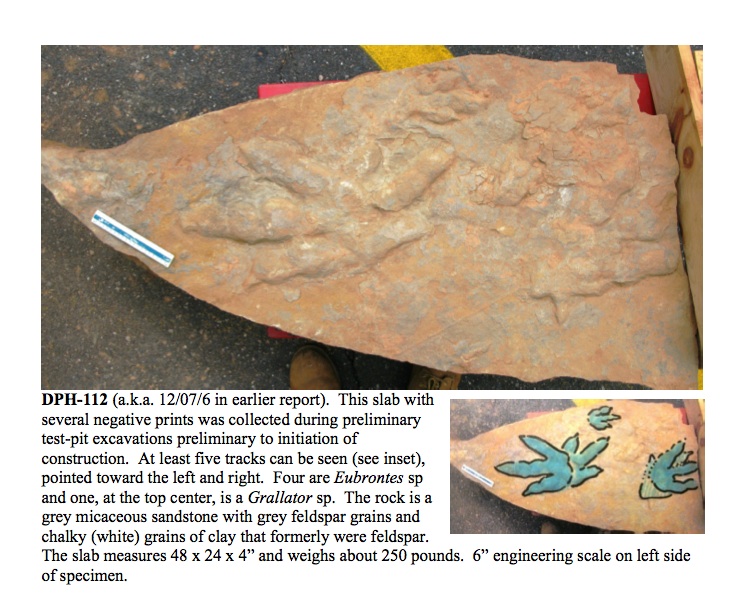
Dad always said there were acres of undiscovered trackways near the famous Rocky Hill site. He was right. A 2013 excavation found those shown above and many more. This image here is linked to a detailed PDF report by the Randolph Steinen, Ph.D., of the Connecticut Geological Survey.
And in the Connecticut River Valley, once you start looking, dinosaur footprints show up everywhere. I'm talking about fossil mudcracks, tracks with nails visible, scribbles of multi-legged critters in long ago mud flats now hardened to stone and weathered by time. “Most people walk past them” said a librarian at Portland Public Library, a river town that is home of former brownstone quarries that have yielded not only tons of handsome stone for area buildings and in New York City, but also beautifully preserved fossil prints. Near the old quarries, walls often feature traces of prehistoric life – especially clear when the natural light in the late afternoon illuminates them.
Speaking of impressions, Dad once told me that young children have minds like clay. He once demonstrated how easily they pick up all they hear and see. As he worked outdoors in his woodshed/shed/workshop, he sang a catchy tune – seemingly oblivious to the youngster under his care nearby. Sure enough, minutes later the little boy started humming the same tune he had just overheard as he played with toy cars. Dad gave a nod and went back to raking, tinkering, fixing.
We shared a passion for explorations and a fascination with dinosaur tracks and natural history (he didn't call it that though). My mother was always game to “go for a ride” in our station wagon or send some of us along with dad. A favorite destination was a little-known (at the time) former quarry on Powder Hill Road where tracks (then outlined in paint) were visible.
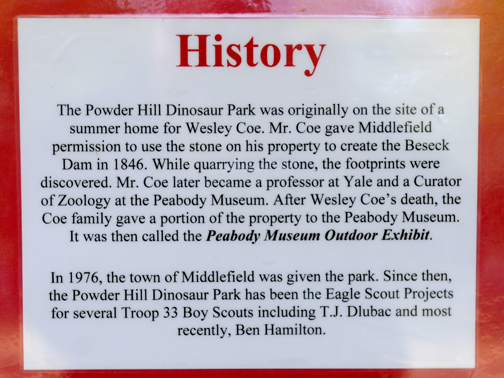 At Hubbard Park in Meriden, we'd stop to examine slabs of rocks with bird-like tracks, then stretch our legs and run around. A family visit to the Peabody Museum in New Haven was a rare treat indeed; for me, it was like visiting a true magic kingdom. There were expeditions to the world-famous Strickland Quarry. (More about that coming up).
At Hubbard Park in Meriden, we'd stop to examine slabs of rocks with bird-like tracks, then stretch our legs and run around. A family visit to the Peabody Museum in New Haven was a rare treat indeed; for me, it was like visiting a true magic kingdom. There were expeditions to the world-famous Strickland Quarry. (More about that coming up).
“The Connecticut River Valley is a geological paradise. Once you learn to read its rocks and landscape, the valley becomes a museum, a 300-mile-long museum of our earth's history,” according to Professor Ed Klekowski of the University of Massachusetts Amherst, who has created an online course on the geology, history and biology of the Connecticut River, which is New England's largest river.
Note: A recent story of Baileyville and the Lake Beseck dam is linked here. A rumored doorstep with dinosaur footprints in Middlefield has so far proved elusive. The slab serving as a bench in Wethersfield remains on a list to check out.

